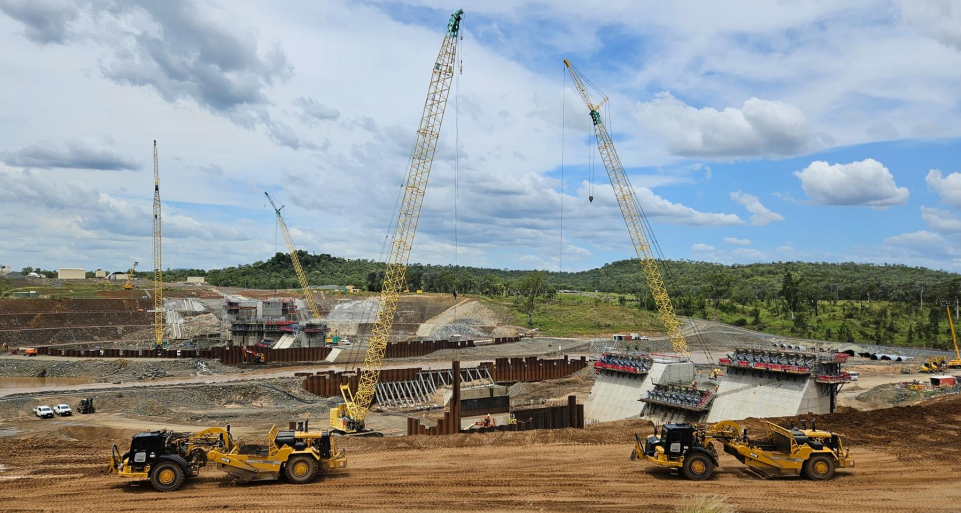Hear from the winners of the Best Paper Award at the NQ Conference

Hear from the authors of "Lessons Learned from Delivery of Rookwood Weir" Best Paper Award recipient at the 2023 NQ Conference. Read the paper here.
What inspired you to work on the Rookwood Weir Project?
Thanh: As a Civil Engineer, I have worked on a range of road, rail and resource infrastructure projects. But I believe, nothing is as challenging or rewarding as a bulk water project. These projects are cyclical, so when the opportunity came up work on Rookwood Weir here at Sunwater, I embraced the opportunity.
Tracey: When I came to Australia four years ago, I was looking for a large challenging dam project to work on and it couldn’t get much better than Rookwood, which claimed many ‘firsts’. It will be the first water infrastructure project of its size to be constructed in the past decade. It will be the largest weir in Queensland and the largest built in Australia since WWII. It is the first water infrastructure project to use the Building Information Modelling process in Queensland providing visualisations to support design and construction, and a database of project information to support the client into the future. However, what I take most pride in is that Rookwood is the first weir in Australia and New Zealand to undertake an Infrastructure Sustainability Design/As Built Rating Scheme, which aims to optimise environmental, societal and economic project outcomes over the long term.
What are the top learnings from your paper?
All projects will go through their challenges and Rookwood Weir is a great example of that. With a good team in a collaborative environment, you will foster the right environment to resolve these. The top 3 learnings from Rookwood Weir were:
- Physical hydraulic model testing and computational fluid dynamics (CFD) modelling can be used to complement each other to enhance confidence in design outcomes. One great example of this was having the ability to provide visualisations of where river flows may cause erosion of the riverbed and river banks. Another example demonstrated where fast flows may cause concerns for fish passage. With both these issues, we were able to adapt the design and provide acceptable outcomes.
- Risk allocation – how does a contract effectively deal with risks that are unable to be mitigated?
- Large-scale infrastructure projects in regional Queensland can meet or exceed local participation targets using the right delivery partners.
What is one key piece of advice you hope readers understand from your paper?
Thanh: Lessons learnt are only useful if you can successfully capture AND then apply them in your future projects. They should also be shared for the benefit of the wider industry.
Tracey: That whilst complex multi-disciplinary projects can have their challenges, by using the right people and tools in a collaborative Alliance way, you can overcome these and achieve successful outcomes to the satisfaction of many different stakeholders, who often have different interests.
